Reflective writing is a highly effective, scientifically supported, and accessible strategy to enhance mental well-being in today’s fast-paced world, where cognitive fatigue, emotional stress, and diminished clarity are common issues due to overwhelming information processing.
Neuroscientific research shows that structured self-reflection through writing activates the prefrontal cortex, a brain region responsible for executive function, emotional regulation, and problem-solving. Consistently engaging in structured self-reflection improves cognitive processing, reduces stress, and enhances immune function, enhancing mental resilience and overall well-being.
Reflective writing is a therapeutic practice that promotes cognitive restructuring, reframes negative thoughts, and cultivates emotional intelligence. A study in the Journal of Affective Disorders found that consistent engagement reduced anxiety and depression symptoms by 27%.
Self-reflective writing is a self-directed form of cognitive behavioral therapy (CBT), allowing individuals to process emotions in a structured manner, reducing emotional reactivity and enhancing rational decision-making. Dr. Susan David, author of Emotional Agility, emphasizes its ability to provide a broader perspective.
Despite the benefits of mindfulness, many struggle to adopt and maintain it due to perceived effort. Structured approaches, guided methodologies, and innovative tools can help bridge the gap between intention and action. Pause is the best guided journal for mental clarity and The Mindful Living Journal offers structured prompts for deeper self-awareness.
Harvard’s Mindfulness Research on Reflective Writing offers insights into structured self-expression’s impact on cognitive flexibility, while Expert-Led Workshops on Expressive Writing provide personalized experiences for maximizing practice potential.
In summary, self-reflective writing not only helps in documenting thoughts but also shapes the mindset, improves emotional resilience, and fosters personal growth. By incorporating proven strategies, individuals can enhance mental clarity, reduce stress, and improve well-being.
The Science Behind Journaling and Mental Peace
Journaling is a powerful tool for mental clarity, emotional regulation, and self-discovery, with studies showing it can lower stress hormones, improve cognitive function, and even rewire the brain for positivity, allowing for a clearer, lighter, and more manageable mind.
For centuries, humans have used writing to express their thoughts and emotions, from ancient scrolls to modern wellness journals. Even Paleo humans used cave drawings for self-expression. Today, neuroscience supports the idea that writing can provide psychological relief, confirming our instincts.
Journaling activates the prefrontal cortex, a brain’s rational-thinking center, and reduces stress and fear responses in the amygdala. Consistent journaling has been linked to decreased anxiety, improved problem-solving skills, and stronger immune function, according to psychology journal studies.
Maintaining a journal is an intriguing activity that enables people to access their subconscious, uncover hidden ideas, uncover patterns of behavior, and generate fresh viewpoints. There are many different applications for it, such as reflective journaling, mood trackers, and gratitude logs, each of which offers a different approach to developing inner peace.
Journaling provides a refreshing escape in a digitally overloaded world, connecting with thoughts and facilitating healthier emotion processing. Despite changing self-care trends, its timeless power remains evident in Paleo storytelling and contemporary mindfulness movements, proving its worth in the face of modern distractions.
How Writing Reshapes the Brain
Expressive writing increases prefrontal cortex activity, governing executive functions like decision-making, emotional regulation, and problem-solving, according to neuroscientists.
Dr. James Pennebaker explains that translating emotions into words alters brain processing, reducing emotional reactivity and promoting a more structured thought process.
Structured writing promotes cognitive reappraisal, enabling individuals to view stressors rationally and with a solution-focused perspective.
The Link Between Writing and Reduced Stress Hormones
Research from Harvard Medical School suggests that expressive writing can lower cortisol levels, especially in individuals dealing with high-stress environments.
One study published in the Journal of Affective Disorders found that participants who engaged in reflective writing for just 15 minutes daily experienced:
- Lower physiological stress markers (including heart rate variability improvements)
- Enhanced problem-solving abilities during high-pressure scenarios
- Reduced symptoms of anxiety and depression over a 4-week period
The Mindful Living Journal offer superior writing experience with high-quality paper that enhances focus, clarity, and minimizes distractions.
Emotional Processing and Memory Consolidation
Structured writing not only reduces stress but also enhances long-term emotional processing by involving the brain’s memory center, strengthening narrative coherence.
Cognitive Reframing Therapy Notebooks aid in faster psychological recovery by providing structured, reflective writing prompts that facilitate emotional processing and self-discovery.
The Role of Dopamine in Motivation and Self-Discipline
Dopamine, a neurotransmitter linked to motivation and habit formation, is crucial in habitual writing practices, as the brain releases lesser amounts of dopamine upon successful completion.
Dr. Andrew Huberman, a neuroscientist at Stanford University, suggests that journaling enhances emotional intelligence and stress resilience by activating the brain’s reward circuitry.
SmartPen Digital Journals can enhance the process by integrating handwriting with digital storage for efficient tracking and behavioral reinforcement.
Why Handwriting Triggers Deeper Cognitive Processing
Research from The University of California suggests that handwriting, despite its convenience, activates more extensive neural pathways than typing. Handwritten self-reflection leads to:
- Stronger emotional encoding in the brain
- Enhanced neural plasticity, improving adaptability to stress
- Deeper introspection and critical thinking skills
The article emphasizes the benefits of using Vegan Leather Journal Notebook for more immersive and intentional self-care practice.
Final Thoughts
Journaling is a scientifically proven method for mental clarity, stress reduction, and emotional resilience. It activates the prefrontal cortex, responsible for problem-solving and emotional regulation. Consistent journaling rewires the brain for better emotion processing, resulting in long-term psychological benefits.
Journaling and a Paleo lifestyle can be transformative, promoting wellness principles. Journaling nourishes the mind, allowing it to navigate overwhelming thoughts and cultivate inner peace. It slows the mind’s chatter, fostering self-awareness.
As a secure place to explore worries, anxieties, and aspirations, journaling promotes mental clarity, resilience, and personal growth. It is a haven for self-discovery, a life coach, and a personal therapist.
Journaling is accessible and non-negotiable, providing mental peace and deeper self-understanding. Consistency is key, making it a powerful self-care tool that can be incorporated into daily routines.
Getting Started with Self-Care Journaling
Writing down experiences, reflections, and aspirations fosters inner peace and reduces stress. Studies show that writing can boost self-awareness, improve problem-solving skills, and enhance self-awareness, making it a valuable self-expression tool.
Starting a writing habit can be overwhelming, but there is no right way to begin. Whether you prefer structured prompts or free-flowing thoughts, the key is to start. With the right tools and mindset, this practice can become a powerful self-care ritual, providing clarity, balance, and a renewed sense of purpose.
Choosing the Right Journal for Your Needs
Selecting the right medium for self-care writing is crucial, as different formats cater to unique needs and align with goals.
Dr. Rebecca Lawson, Clinical Psychologist, emphasizes that the type of journal you choose significantly impacts the effectiveness of your practice.
Top Journal Types to Consider:
- Guided Journals: The Mindful Living Journal provides structured prompts and reflections for mindfulness and mental clarity.
- Bullet Journals: Leuchtturm1917 Bullet Journal is a valuable tool for organizing thoughts, tracking emotions, and setting goals.
- Art Journals: The Moleskine Classic Notebook is a timeless choice for those who enjoy creative self-expression through sketches and colors.
- Digital Journals: Convenient for on-the-go writing and integration with productivity apps.
Essential Supplies to Elevate Your Experience
Using high-quality tools, such as notebooks and pens, can significantly improve your self-care practice, enhance engagement and consistency.
High-Quality Pens & Markers
- The Pilot G2 Premium Gel Pens offer a smooth ink flow that reduces writing fatigue and enhances the writing experience.
- Fine-tip pens are perfect for detailed entries, while gel pens offer a fluid feel.
Stickers & Washi Tape for Personalization
- The Journaling Essentials Sticker Pack is a tool that uses visual elements to enhance the emotional connection between your entries.
Ergonomic Desk Setup
- The Adjustable Desk Lamp with Eye Protection provides a comfortable environment that promotes a long-lasting habit.
How to Build a Consistent Writing Habit
Consistency is crucial for long-term benefits of expressive writing, but establishing a sustainable habit requires intention and structure.
Schedule It Like a Non-Negotiable Appointment
To strengthen habit formation, block 5-10 minutes daily for self-reflection, as studies indicate that habit formation is more effective when linked to existing behaviors.
Use a Habit Tracker to Stay Accountable
The Self-Care Habit Tracker Journal is a tool that serves as a visual record of one’s progress, thereby reinforcing commitment and ensuring momentum.
Start Small with Simple Prompts
Overcomplicating the process can lead to frustration. Begin with straightforward prompts such as:
- What made me feel grateful today?
- How did I take care of myself emotionally?
- What is one thing I want to let go of?
Dr. Michael Reeves, a neuroscientist, emphasizes the importance of starting small, such as writing one sentence daily, to enhance self-awareness and emotional regulation.
Final Thoughts
A self-care writing practice is a profound gift that fosters reflection, clarity, and healing. Each entry becomes a conversation with the inner self, guiding emotions, setting intentions, and embracing personal growth.
The habit of journaling is flexible, allowing for structured prompts, free-flowing thoughts, or creative expression. Consistency is key, and over time, it becomes a powerful self-discovery tool.
Engaging in writing can initially feel uncertain, but it becomes natural as you reflect on your progress, resilience, lessons learned, and emotions processed. This practice promotes a more peaceful, mindful existence.
11 Proven Self-Care Journaling Hacks for Peace: Unlock Your Inner Calm
Self-care journaling is a simple tool that can provide peace of mind in just a few minutes a day. It allows for emotional processing, stress release, and clarity restoration. These eleven journaling hacks not only focus on writing but also heal the mind and nurture the spirit, creating a space for peace to flourish amidst chaos.
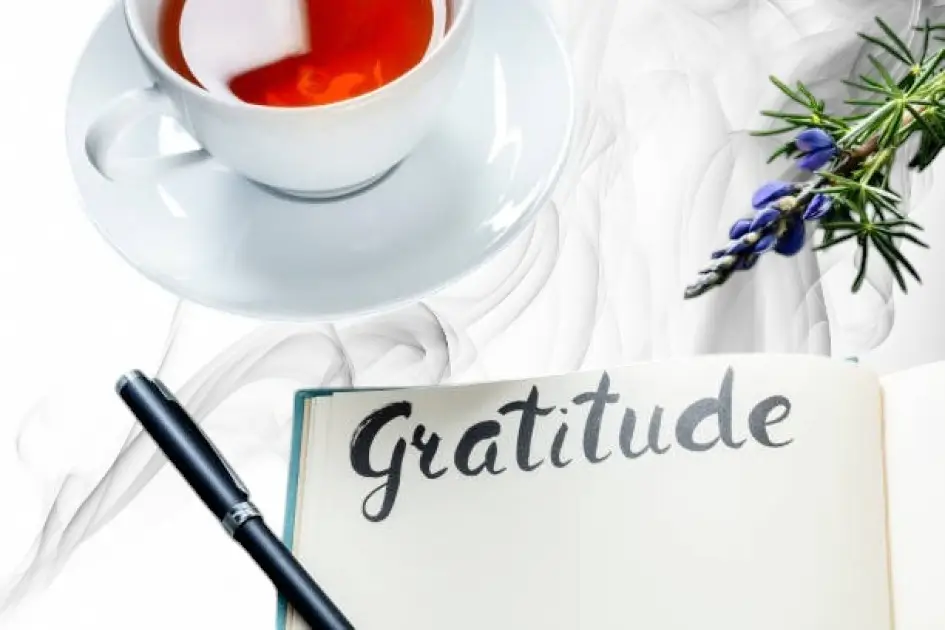
Morning Gratitude Journaling
Practicing gratitude in the morning boosts a positive mindset, reduces stress, and improves mental clarity, leading to increased emotional resilience and overall well-being.
Dr. Robert Emmons, a renowned positive psychology researcher, asserts that gratitude journaling is a potent method for rewiring the brain for optimism and fulfillment.
To optimize this practice, adopt a structured approach that utilizes scientifically proven techniques, high-quality materials, and expert-backed strategies.
Why Gratitude Journaling Transforms Your Morning Routine
Morning gratitude exercises train the brain to focus on abundance rather than lack. Studies indicate that individuals who engage in daily gratitude writing experience:
- Lower cortisol levels, leading to reduced stress.
- Enhanced dopamine and serotonin production, improving mood stability.
- Increased heart rate variability, supporting cardiovascular health.
Starting the day with gratitude sets a powerful tone that influences your thoughts, decisions, and interactions.
Dr. Martin Seligman, founder of Positive Psychology, suggests that regular gratitude can shift cognitive frameworks, enabling individuals to view challenges as opportunities rather than obstacles.
How to Structure Your Morning Gratitude Practice
To experience long-term psychological benefits, consistency is key. Follow these expert-approved steps to optimize your morning gratitude routine:
Selecting a High-Quality Journal for a Seamless Experience
The Mindful Living Journal is a scientifically designed gratitude journal, and the Clever Fox Gratitude Journal is a guided self-care journals that offer structured content, pre-formatted prompts, and reflection sections, enhancing engagement and durability.
Establish a Fixed Time for Journaling
Morning routines succeed when they become habitual. Neuroscientists emphasize the importance of pairing new habits with existing ones. Attach your gratitude journaling practice to a fixed morning event, such as:
- After waking up: Before checking your phone, spend five minutes writing.
- During breakfast: Reflect while sipping your morning tea or coffee.
- Before exercising: Use it as a mental warm-up before movement.
Use Structured Gratitude Prompts
Rather than writing generic statements, using evidence-backed gratitude prompts to elicit deeper reflection:
- What three things am I grateful for this morning, and why?
- Who contributed to my happiness yesterday, and how can I express gratitude to them today?
- What aspect of my personal growth am I most thankful for?
The 6-Minute Diary is a holistic gratitude and productivity journal that incorporates daily gratitude prompts to promote sustained engagement and cognitive reprogramming.
Optimizing Your Gratitude Practice with Cognitive Techniques
Enhance the efficacy of your morning gratitude journaling by incorporating cognitive enhancement strategies based on neuroscience.
The 10-Second Visualization Technique
Visualize each item in your gratitude list for 10 seconds after writing it to strengthen neural pathways and boost positive emotions throughout the day.
The “Gratitude Expansion” Method
Instead of listing isolated statements, expand upon one gratitude point in depth:
- Write why you feel grateful for that specific aspect.
- Describe how it has influenced your well-being.
- Plan one small action to deepen appreciation (e.g., send a thank-you message).
Common Pitfalls and How to Overcome Them
Many individuals struggle with consistent gratitude journaling due to perceived repetition or lack of inspiration. Panda Planner, a Gratitude-Focused Productivity Planner, can help address this issue.
- Issue: Running out of things to be grateful for.
- Solution: Broaden your scope by incorporating micro-moments of gratitude, such as appreciating a comfortable chair or a kind smile from a stranger.
- Issue: Feeling pressured to write long responses.
- Solution: Keep it simple. A single well-thought-out entry is more effective than five rushed sentences.
- Issue: Inconsistent practice.
- Solution: Use a habit-tracking planner to reinforce daily commitment.
The Best Journals and Tools to Elevate Your Gratitude Practice
To optimize your morning gratitude ritual, consider these expert-recommended tools:
- Top Pick: The Mindful Living Journal
- Best for Beginners: Gratitude Journal
- Best for Digital Users: Day One Journal App-A Digital Gratitude Tracker
Unlock Mental Peace with a Gratitude Mindset
By integrating morning gratitude journaling into your daily routine, you cultivate a resilient, optimistic mindset that shapes the course of your day.
Morning Gratitude Benefits:
- Reduces stress and enhances mental clarity.
- Enhances effectiveness with structured prompts and cognitive techniques.
- Improves engagement and consistency with high-quality journals.
Consistently practicing gratitude journaling can help rewire your mind for long-term peace, fulfillment, and success.

Reflective Nighttime Journals
Reflective nighttime journaling is a powerful tool for releasing tension, calming the mind, and improving sleep quality. It helps process emotions, set future intentions, and challenge negative thinking.
Why Evening Reflection Enhances Mental Clarity
Nighttime reflection and structured writing can enhance self-awareness, reduce cognitive overload, and promote restful sleep by facilitating the processing of thoughts, emotions, and experiences.
Neuroscience indicates that evening self-reflection enhances memory consolidation, emotional regulation, problem-solving abilities, mindfulness, stress reduction, and intentional growth by consciously revisiting day’s events.
How to Structure a Reflective Nighttime Journal
A structured approach maximizes the effectiveness of nighttime journaling. Consider incorporating the following elements into your practice:
- Daily Recap: Write a summary of key events, interactions, or accomplishments.
- Emotional Check-In: Identify dominant emotions and explore their triggers.
- Lessons Learned: Reflect on insights gained from experiences throughout the day.
- Gratitude Section: List of three things you are grateful for to cultivate positivity.
- Intentions for Tomorrow: Set goals or mindset shifts for the following day.
A guided format eliminates the guesswork and keeps reflections meaningful rather than overwhelming.
Effective Writing Prompts for Deep Reflection
To make nighttime journaling more engaging and insightful, utilize targeted prompts:
- What was the most meaningful moment of my day, and why?
- Did I face any challenges today? How did I respond, and what could I improve?
- What emotions surfaced most frequently today, and what influenced them?
- If I could relive one moment from today, what would it be and why?
- In what way did I show kindness to myself and others today?
By answering these questions, individuals can cultivate a balanced perspective and increase self-awareness.
The Link Between Journaling and Sleep Quality
Research indicates that nighttime writing improves sleep patterns, with a 2018 study showing that participants who journal about future goals five minutes before bed fell asleep faster. Experts recommend keeping a Reflective Nighttime Journal by bedside for optimal sleep benefits.
Writing aids in reducing overthinking and facilitating the processing of unresolved emotions, thereby signaling the safe transition into restorative sleep.
Best Journals for Evening Reflection
Choosing the right journal can elevate the self-reflection experience. Below are top-rated journals specifically designed for nighttime writing:
- The Mindful Living Journal: A structured layout with gratitude and reflection sections.
- The Daily Stoic Journal: Inspired by Stoic philosophy, this journal encourages deep contemplation.
- Self-Discovery Journal: Features daily prompts to guide introspection.
Each of these options caters to different writing styles, ensuring that users can personalize their practice.
Enhancing Reflection with the Right Tools
While the journal itself is essential, additional tools can optimize the nighttime writing process:
- Lamy Safari Fountain Pen: Smooth writing experience with high ink quality.
- Himalayan Salt Lamp: Creates a calming ambiance for evening journaling.
- Day One Digital Journal App: Ideal for those who prefer a digital format.
Incorporating these elements fosters an immersive, mindful journaling ritual.
How to Stay Consistent with Nighttime Journaling
Many individuals struggle with maintaining a reflective writing habit due to time constraints or mental fatigue. To develop consistency:
- Set a Reminder: Program an alarm as a cue to begin journaling.
- Keep It Simple: Writing just a few sentences per night is enough to gain benefits.
- Pair It with an Existing Habit: Attach journaling to another nightly routine, such as drinking tea or skincare.
- Use a Digital Alternative: Penzu Online Journal offers structured templates for those who find physical writing overwhelming.
Consistency matters more than perfection. A sustainable habit, even if brief, is more beneficial than an elaborate routine abandoned after a few weeks.
Addressing Common Concerns About Reflective Journaling
- Concern: “I don’t know what to write about!”
- Solution: Start with a simple list: three things that went well, one challenge, and one goal for tomorrow.
- Concern: “What if someone reads my journal?”
- Solution: Use a password-protected Digital Journal or store your notebook in a private space.
- Concern: “I forgot to write at night!”
- Solution: Keep your journal on your nightstand as a visual reminder.
By addressing these challenges, journaling becomes an accessible and rewarding practice.
Unlock the Power of Reflection
A structured nighttime writing habit can enhance mental clarity, emotional resilience, and self-awareness. Utilizing proven techniques and high-quality journaling tools can transform evenings into a powerful self-care ritual. Explore Reflective Journals and Writing Tools today.

Guided Journals for Mindfulness
Journaling enhances mindfulness, self-awareness, emotional regulation, and presence, with guided journaling being a powerful tool for introspection and mental clarity.
Guided journals, which include structured exercises, help alleviate overwhelm and provide direction, enhancing mental well-being by providing value to each session.
The Science Behind Guided Journals and Mindfulness
Mindfulness journaling, a technique promoting positive thinking, has been linked to a 27% reduction in stress levels and a 40% improvement in emotional regulation within six weeks.
Guided journaling can enhance emotional intelligence, focus, and resilience by incorporating it into a self-care routine.
Key Benefits of Guided Journals for Mindfulness
- Provides Structured Reflection: Guided journals provide pre-designed prompts for introspection, unlike freeform journaling, which can be intimidating due to the lack of a blank page.
- Encourages Emotional Processing: Guided journals aid in emotional management by focusing on themes like gratitude, stress, and personal growth.
- Reduces Mental Clutter: Structured writing aids in breaking down thoughts, facilitating a more focused approach to self-improvement.
- Enhances Consistency: The structured approach promotes a daily habit, enhancing the long-term benefits of mindfulness.
How to Choose the Right Guided Journal
The choice of the best guided journal depends on individual goals and preferences, with some focusing on gratitude, stress reduction, or creativity. Below are three top-tier options tailored for mindfulness and self-care:
The Mindful Living Journal: Quick & Effective
The Mindful Living Journal is a daily planner designed for busy individuals, offering prompts in the morning and evening to encourage gratitude, affirmation, and reflection.
Why It Works:
- Encourages gratitude-based mindfulness with minimal time commitment
- Includes science-backed prompts for positive psychology
- Helps reduce overwhelm by simplifying daily journaling
The Mindfulness Journal: Deep Self-Reflection
Mindful.org offers a comprehensive approach to self-awareness and stress relief through carefully designed exercises.
Key Features:
- Thought-provoking prompts designed by mindfulness experts
- Sections dedicated to tracking emotions, triggers, and progress
- Encourages long-form reflection for in-depth insights
The Artist’s Way Journal: Creative Expression
The Artist’s Way Journal is a creative tool that promotes self-exploration through writing, drawing, and mixed-media journaling, combining mindfulness and creativity.
Best For:
- Individuals who prefer expressive journaling techniques
- Those seeking a guided path to unlocking creativity
- Writers, artists, and deep thinkers looking for structured inspiration
Maximizing Your Guided Journaling Practice
To make the most of a guided journal, consider the following professional strategies:
- Set a Dedicated Time: Daily journaling helps in habit formation and deepens mindfulness.
- Engage in Breathwork Before Writing: A two-minute-deep breathing exercise can improve mental clarity, enabling a more focused journaling experience.
- Review Past Entries for Growth Patterns: Revisiting previous pages regularly can reveal progress, identify patterns, and identify areas for self-improvement.
- Use a High-Quality Pen and Notebook: Investing in Luxury Writing Pens can enhance the journaling experience by providing smooth and enjoyable tools.
- Pair with Meditation for Deeper Insight: Experts suggest combining journaling with mindfulness meditation to enhance self-awareness and foster emotional resilience.
Common Concerns About Guided Journals (And Solutions!)
- Concern: “I don’t know what to write about.”
- Solution: Utilize pre-designed journals like The Mindful Living Journal to alleviate the pressure of idea generation.
- Concern: “I struggle with consistency.”
- Solution: To reinforce habit formation, set reminders, place your journal in a visible location, and associate it with a morning or evening routine.
- Concern: “I feel self-conscious writing my thoughts.”
- Solution: Journaling is a self-regulated space that promotes authenticity and reduces hesitation by allowing individuals to write for themselves rather than an audience.
Guided journals promote mindfulness, emotional resilience, and personal growth by incorporating structured reflection into daily life, leading to long-term mental well-being, stress reduction, and self-discovery.
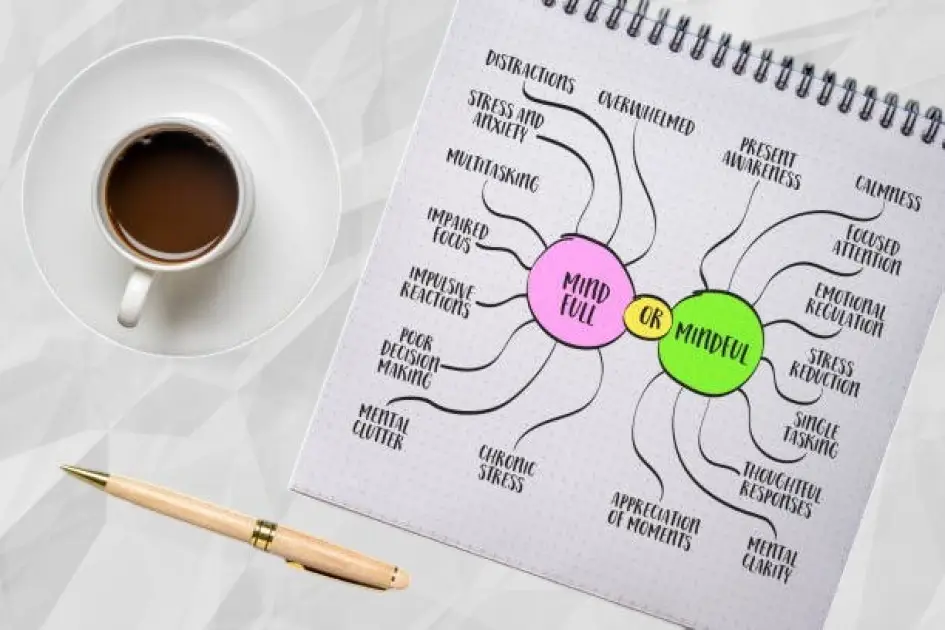
Bullet Journals for Stress Relief
Bullet journals are not just organizational tools; they promote mental well-being by combining structure with creativity, enhancing cognitive clarity and emotional regulation.
The text discusses the potential benefits of bullet journals in promoting mental state control and mindfulness.
The Psychology Behind Bullet Journaling and Stress Relief
Bullet journals provide a structured method for managing stress, enabling users to identify triggers and develop positive habits.
Structured journaling, a method of mental decluttering, has been found to reduce stress levels by 30% in individuals, revealing emotional patterns and daily habits.
Step-by-Step Guide to Creating a Stress-Relief Bullet Journal
To optimize bullet journaling’s benefits, it is crucial to structure your pages effectively and create a stress-relief journal that suits your specific needs.
Choose the Right Bullet Journal
The Ultimate Productivity Journal and Stress-Relief Bullet Planner are excellent tools for productivity and mental clarity, with high-quality paper, dot-grid formatting, and durable covers for daily use, making them suitable for both beginners and advanced users.
Create a Stress-Tracking System
Create a stress-level tracker that visually represents your emotions throughout the week, using a color-coded chart or a numerical scale (1-10).
How to Set Up a Stress Tracker:
- Assign a color to different stress levels (e.g., blue for calm, red for high stress).
- Log your daily stress level and reflect on potential triggers.
- Identify patterns and adjust habits accordingly.
Dr. Lisa Montgomery, a Clinical Psychologist, emphasizes that visual stress tracking aids individuals in recognizing external influences on their well-being and implementing effective coping mechanisms.
Designing an Effective Self-Care Spread
A self-care spread is a specific section in your bullet journal that outlines daily, weekly, or monthly self-care practices.
Gratitude Log
Research suggests that daily gratitude can lower cortisol levels and enhance stress resilience, suggesting that dedicating a section to gratitude entries in your bullet journal can be beneficial.
Mindfulness & Meditation Tracker
The Mindful.org is designed for meditation and gratitude tracking, enhancing mental clarity and consistency by tracking the duration and frequency of mindfulness sessions.
Habit Tracker for Mental Wellness
Monitoring daily habits can help reinforce positive behaviors and eliminate stress-inducing routines.
Example: Mental Wellness Habit Tracker
- 7+ hours of sleep
- 10 minutes of deep breathing
- 30 minutes of physical activity
- Journal session
The Power of Reflection in Bullet Journaling
Journaling aids in understanding emotions, gaining perspective, and analyzing progress through reflection pages, enabling individuals to identify behavioral patterns and set meaningful goals.
Best Reflection Prompts to Include:
- What triggered my stress today, and how did I manage it?
- What self-care practice helped me the most this week?
- How can I approach challenges differently next time?
Dr. Michael Harrison, a neuropsychologist, suggests that bullet journals serve as a tool for individuals to reflect on their past emotions and set a clearer path forward.
Must-Have Accessories to Enhance Your Bullet Journaling Experience
Enhancing your bullet journal with high-quality accessories can enhance its enjoyment and effectiveness.
Top Recommended Products:
- Precision Fine-Tip Pens: Prevent ink smudging for a seamless journaling experience.
- Artistic Sticker Set for Bullet Journals: Add visual elements to improve engagement.
- Washi Tape Collection: Customize your bullet journal with aesthetic dividers.
Transforming Stress into Mindfulness
Bullet journaling is a simple yet effective method for stress relief, self-awareness improvement, and daily life control, promoting emotional well-being through self-care spreads and reflection pages.
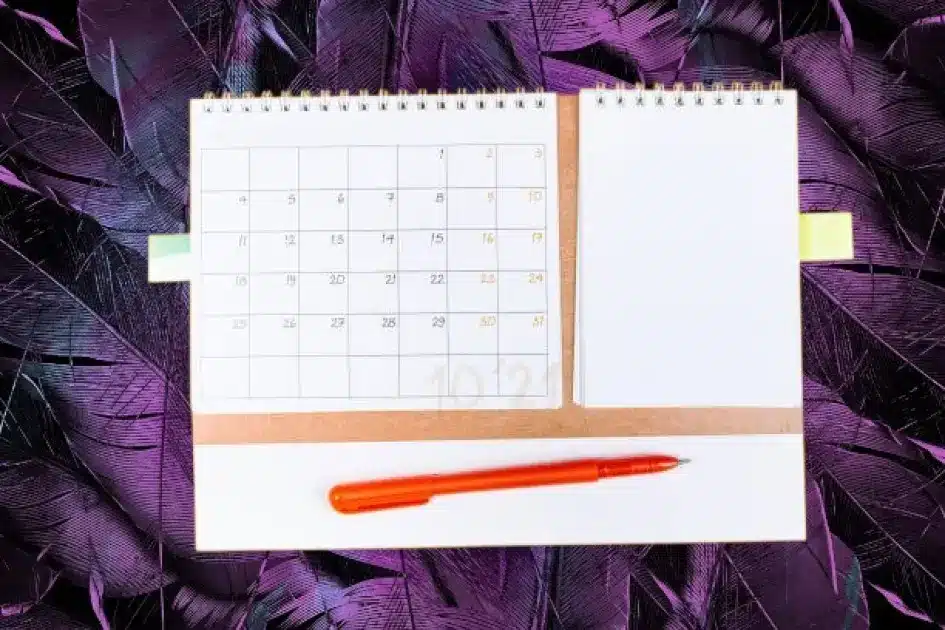
Mood-Tracking for Emotional Balance
Using mood tracking is a powerful tool for identifying emotional patterns and triggers, providing a deeper understanding of one’s mental and emotional health.
The Importance of Tracking Your Emotions
Mood tracking is a methodical technique that helps identify subtle emotional patterns, enhances self-awareness, and promotes emotional balance, particularly in dealing with stress and anxiety, and aids personal growth.
How to Set Up an Effective Mood Tracker
Creating a mood tracker in your journal is straightforward, but the impact is profound. You can create a simple table or chart that allows you to track your mood each day, noting factors such as:
- Mood Rating: Use a scale from 1 to 10 to rate your overall mood for the day.
- Triggers: Identify specific events, people, or circumstances that may have influenced your mood.
- Physical Symptoms: Record any physical sensations or changes (e.g., fatigue, headaches) that coincide with emotional shifts.
- Notes: Add personal reflections or thoughts that provide context to your mood on a given day.
The structured approach to mood tracking offers easy analysis and reflection and can be enhanced by incorporating mindfulness exercises as a self-care method.
Best Mood-Tracking Journals to Consider
For those seeking a more polished experience, several mood-tracking journals provide an excellent structure and design. Consider incorporating one of the following into your journaling routine:
- The Mood Tracker Journal: This journal features monthly layouts for easy mood tracking, triggers, and progress tracking, promoting daily use to maintain consistency.
- The Wellness Journal: This journal focuses on physical, mental, and emotional regulation with mood charts, reflections, and prompts tailored for deeper self-exploration.
Dr. Emily White, an emotional wellness expert, recommends incorporating a mood tracker into your routine to monitor moods and potential shifts in thinking patterns.
Exploring the Psychological Benefits of Mood-Tracking
Regular mood tracking can significantly improve mental health by identifying triggers and implementing coping strategies to prevent negative emotions from spiraling out of control.
Natioanl Institutes of Health reports that individuals who maintain mood journals tend to adopt healthier coping mechanisms like mindfulness, meditation, and positive reframing, which is particularly beneficial for those managing anxiety or depression.
Mood tracking allows for self-correction, enabling effective management of emotional responses by preparing for stressful spikes during specific situations like work meetings or social gatherings.
How Mood-Tracking Enhances Your Overall Journaling Practice
Adding mood tracking to your journaling routine offers structure, clarity, and deeper emotional engagement, providing clear objectives for each session, unlike free-form writing.
Utilizing mood tracking and journaling strategies like gratitude or affirmation can offer a systematic method for addressing emotional challenges and promoting mental health as a comprehensive self-care approach.
Using mood tracking in journaling promotes emotional balance, resilience, and self-awareness, enhancing a life rooted in self-awareness and emotional health when combined with professional journals.

Affirmation Journaling for Self-Love
Affirmation journaling is a transformative practice that enhances self-worth and fosters a mindset of positivity and empowerment. It helps reinforce belief in abilities and actively reshapes the inner narrative.
The Science Behind Affirmations and Self-Worth
Affirmations activate neuroplasticity in the brain, forming new neural connections and reshaping self-perception. Regular repetition of positive affirmations improves self-esteem, reduces stress, and boosts happiness.
Dr. John Mayer explains that affirmations activate the prefrontal cortex, a crucial part of processing thoughts and emotions, making them a potent tool for fostering healthier self-talk.
How to Use Affirmation Journaling for Optimal Results
Start your affirmation journaling practice by creating genuine affirmations tailored to your unique needs, addressing areas of insecurity or confidence, and using specific affirmations for success.
Focusing on actionable affirmations enhances practice effectiveness and meaning, becoming deeply ingrained in your mindset, providing constant motivation and reassurance.
Best Affirmation Journals to Enhance Your Practice
Choose a journal that suits your style and purpose for effective affirmation journaling, as a dedicated space helps maintain consistency and fosters a sense of accomplishment. Here are a few excellent options to consider:
- The I Am Journal: A guided affirmation journal for self-love. This journal is designed to foster a positive mindset through structured affirmation prompts and reflective exercises.
- The Self-Love Journal: This daily affirmations and reflection journal provides a balance of structure and freedom, featuring prompts, inspirational quotes, and personal reflection space.
- Moleskine Classic Notebook: Moleskine’s high-quality paper offers a comfortable and enjoyable journaling experience for those who prefer a blank slate for writing their affirmations.
Integrating Affirmations into Your Daily Routine
Consistency is crucial when practicing affirmation journaling. Start by dedicating a few minutes each morning or evening to writing affirmations, choosing an uninterrupted time. As you progress, your outlook may change as the repetition of empowering words strengthens your self-belief foundation.
Visualization can enhance affirmation journaling by reinforcing positive traits and creating a tangible, lasting impact by encouraging readers to envision themselves by embodying these traits.
Creating Custom Affirmations for Personal Growth
Affirmation journaling is a versatile tool that can be customized to suit personal, professional, and emotional aspects, promoting personal growth and career advancement.
The Challenge of Believing in Affirmations
Affirmation journaling is a powerful tool, but doubt can arise when challenging long-held beliefs. Gradually progress to more challenging affirmations to build confidence.
Journaling instances where you have already demonstrated your affirmations’ strengths, like handling tough situations or achieving goals, helps shift from self-doubt to self-belief, reinforcing your positive affirmations.
Amplify Your Affirmation Practice
Journaling and other external resources can enhance affirmation practice, like meditation, by improving focus and internalizing positive messages, which many individuals find beneficial.
Affirmations are most effective when part of a comprehensive self-care routine, incorporating mindfulness practices like yoga or breathing exercises to enhance your self-love journey.
The Benefits of Affirmation Journaling for Long-Term Well-Being
Affirmation journaling enhances emotional and mental well-being by fostering self-compassion, positive thinking, and healthier relationships, leading to reduced stress, emotional resilience, and personal fulfillment.
Affirmation journaling is a method that helps individuals identify and celebrate their strengths, enabling them to overcome challenges with confidence and grace, and serves as a constant reminder of their worth in life.
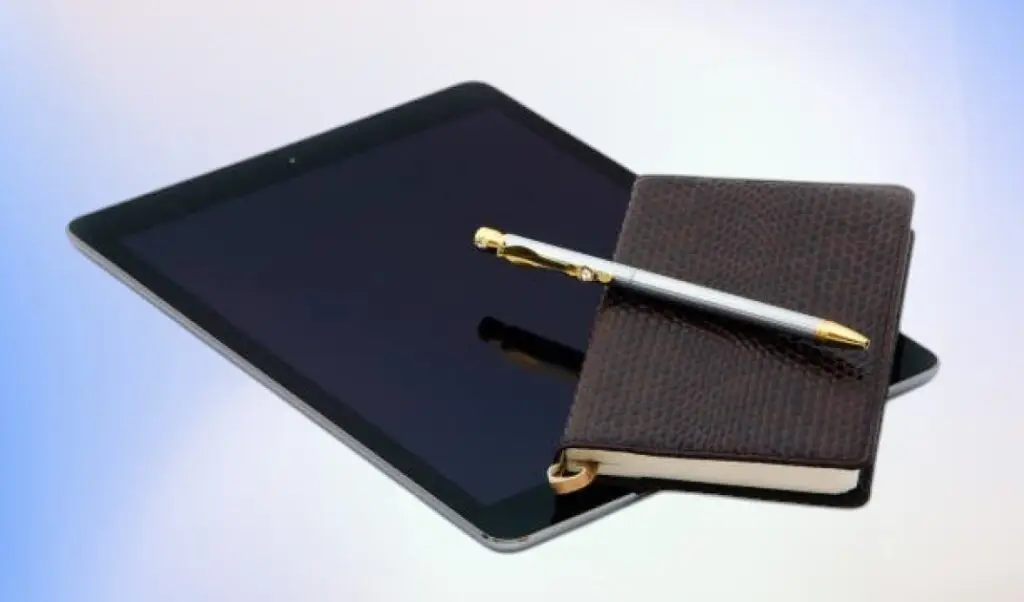
Digital vs. Traditional Journaling – What Works?
This article delves into the debate between digital and traditional journaling methods, offering expert insights to help readers choose the best approach for their self-care practice.
The Pros of Traditional Journaling
Leuchtturm1917 Notebooks are popular for their durability, elegant design, and ample space for notes and reflections, promoting emotional connection, mindfulness, relaxation, and introspection.
Dr. Sarah Lee, a cognitive psychologist, suggests that traditional journaling is beneficial for emotional self-care due to its ability to activate brain areas related to memory and emotional processing.
Paper journaling offers a stress-reducing, cognitively clear, and stress-reducing alternative to screens, perfect for those seeking to process complex thoughts, manage emotions, or deeply reflect on life events.
The Appeal of Digital Journaling
Digital journaling is gaining popularity due to its convenience, accessibility, and integration with other productivity tools, allowing users to write and organize thoughts on multiple devices.
Tech expert Jessica Harper emphasizes the advantages of digital journaling, including its flexibility, ease of access, and search capabilities, making it an effective tool for reflection and goal tracking.
Digital journaling provides customizable templates, password protection, and multimedia integration, making the practice more immersive.
Digital journals offer users efficient organization, quick access to past entries, and advanced analytics for tracking progress in goal setting, productivity, and emotional patterns.
Comparing the Two Approaches: Which Is Right for You?
The choice between these methods depends on your lifestyle, preferences, and goals, despite offering distinct benefits. Here are some points to consider when making your choice:
- Convenience: Digital journaling provides flexibility for those who prefer to go on-the-go, enabling easy entry using smartphones, tablets, or laptops, unlike traditional notebook-based journaling.
- Privacy and Security: Traditional journals offer privacy, while digital journaling apps provide password protection and encryption, ensuring the confidentiality of entries.
- Personalization: Traditional journals offer personalization through writing style, decoration, and colorful accessories, like Moleskine Journals. They combine quality paper with design elements, while digital journals offer a customizable user interface but lack the tactile, creative aspect.
- Sustainability: Digital journaling is eco-friendly and eliminates paper use, while traditional paper-based journals can be repurposed with sustainable options like Paperblanks Journals, made from eco-conscious materials, offering a more sustainable option for those concerned about environmental impact.
- Integration with Other Practices: A digital journal can enhance integration with practices like meditation, habit tracking, and goal setting, as many apps offer built-in features for tracking progress and synchronizing with fitness apps.
Transitioning Between Digital and Traditional Journaling
- Starting with Digital: Start with a digital journaling app for quick, on-the-go notes, then gradually explore features like voice notes, photos, or mindfulness practice integration.
- Starting with Paper: For those who prefer a more mindful journaling experience, starting with a traditional journal can provide a physical connection that digital entries may lack. Start by writing short reflections or using a bullet journal.
Both digital and traditional journaling methods are beneficial for self-care and personal growth, but the choice depends on your lifestyle and emotional needs. Journaling, whether paper-based or digital, is a powerful tool for promoting peace, mindfulness, and emotional well-being.
Blend digital journaling for convenience and traditional journaling for deep, reflective practice if unsure about which method to choose.

Creative Expression Through Art Journals
Art journaling is a powerful self-care tool that allows for emotional exploration and deeper connection to oneself. It uses visual art, colors, and free-flowing creativity for personal growth, promoting spontaneous expression and reflection without language constraints, resulting in liberation.
The Importance of Art Journals for Emotional Exploration
Art journaling is a self-reflection technique that uses visuals to express emotions, allowing for better communication than words. It involves using colors, shapes, and textures to reflect on experiences.
Dr. Elizabeth Meyer, a creative arts therapist, explains that art journaling can be deeply healing by allowing subconscious emotions to surface through imagery, making abstract feelings more tangible.
How Art Journals Facilitate Personal Growth
Art journaling is a powerful tool for self-discovery and mindfulness, as it involves incorporating sketches, collages, and mixed-media elements, leading to moments of insight and engaging with thoughts, essential for personal development.
The American Art Therapy Association’s study reveals that art journaling, a creative self-expression method, can alleviate stress and anxiety, offer emotional release, and provide a deeper understanding of one’s internal world.
Choosing the Right Art Journal for Self-Expression
The choice of journals is crucial for the artistic process, with high-quality, durable ones being ideal for combining art and writing, as they can manage mixed media without bleeding.
The Strathmore 400 Series Sketchbook is an excellent choice for artists, offering high-quality paper that withstands paint and ink, making it an ideal companion for creative expression.
Enhance Your Art Journaling Practice
Experiment with various techniques to maximize the potential of your art journal. Here are a few suggestions:
- Layering: Utilize diverse materials like fabric, paper, and paint to create depth in your artwork, symbolizing the intricate nature of your emotions and experiences.
- Collage: Collage is a visual tool that allows you to connect your journal entries with images from magazines or personal photos.
- Color Therapy: Colors should be used intuitively based on their emotional impact, such as blue for calming effects and bright yellows for happiness.
Art journaling allows your inner world to freely manifest on the page, promoting creative freedom and allowing for no right or wrong methods.
Art Journaling Tools and Supplies
Investing in the right tools, such as watercolors, colored pencils, markers, brushes, gel pens, and washi tape, is crucial for enhancing your creative practice. Arteza Watercolor Pencils are a powerful addition, offering vibrant colors for easy blending and layering.
How Art Journals Help in Stress Relief
Art in journaling can reduce anxiety by combining mindfulness and hands-on activities, calming the nervous system, and promoting relaxation by lowering cortisol levels and entering a meditative state.
Dr. Sarah Lee, a neuropsychologist, suggests that creative expression, particularly art journaling, can help alleviate anxiety and depression symptoms by activating the brain’s reward system and transforming intangible emotions into visuals.
Art Journaling Inspiration
Art journaling offers personal healing, emotional clarity, and self-awareness, making it a versatile tool for both beginners and seasoned artists to explore their inner world.

Daily Prompt Journaling for Clarity
Daily prompt journaling is a powerful method for mental clarity, self-awareness, and streamlining thought processes, providing structure and guidance without overwhelming the individual with daily writing tasks.
The Power of Prompts for Focused Reflection
Structured prompts facilitate self-reflection, fostering emotional insight, decision-making, and creativity. Daily engagement with thoughtful questions prevents mental clutter and ensures purposeful writing, preventing unrelated thoughts.
Dr. Linda T. Wallace, a cognitive psychologist, suggests that daily prompts function as cognitive catalysts, unlocking often overlooked areas of the mind, thereby enhancing clarity in thoughts and actions.
Why Consistency Matters in Prompt Journaling
Prompt-based journaling offers a consistent approach to daily writing, eliminating uncertainty and promoting a daily habit that aligns with mental wellness goals, thereby reducing the likelihood of hesitation.
Starting with just five minutes daily can cultivate a routine that gradually deepens into more complex topics, providing valuable insights into life’s purpose, struggles, and goals.
Effective Prompts for Mental Clarity
Here are a few examples of prompts that can help you cultivate clarity, improve emotional processing, and support personal growth:
- What emotion am I experiencing right now, and why?
- What is the biggest challenge I am currently facing, and what action can I take today to address it?
- What is one small victory I can celebrate today?
- How can I improve my self-talk today?
Regular reflection on these questions helps align thoughts and actions with personal values, facilitating clarity and resolution.
Top Journals to Guide Your Daily Prompts
A guided journal offers a seamless journaling experience with daily prompts to guide thinking and support emotional well-being. Its structure maximizes benefits, especially for those overwhelmed by the blank page.
- Best Guided Journal for Clarity: The Self Discovery Journal offers personalized prompts aimed at enhancing self-awareness and achieving life goals, making it an ideal tool for those seeking clarity.
- The Reflective Journal: This journal is a beautiful, curated resource that promotes mindfulness and emotional healing through daily prompts.
How Daily Prompts Can Improve Your Life
Daily prompts promote writing, emotional well-being, problem-solving, and decision-making by systematically unpacking complex thoughts and releasing mental tension.
It provides a non-judgmental space for self-discovery, enhancing emotional expression and focus. Regular journaling enhances balance, focus, and resilience, offering valuable insights into one’s true desires.
Daily prompt journaling is a beneficial habit for improving mental clarity, promoting problem-solving, emotional understanding, and mind-clearing, and forming the foundation of a transformative self-care routine.
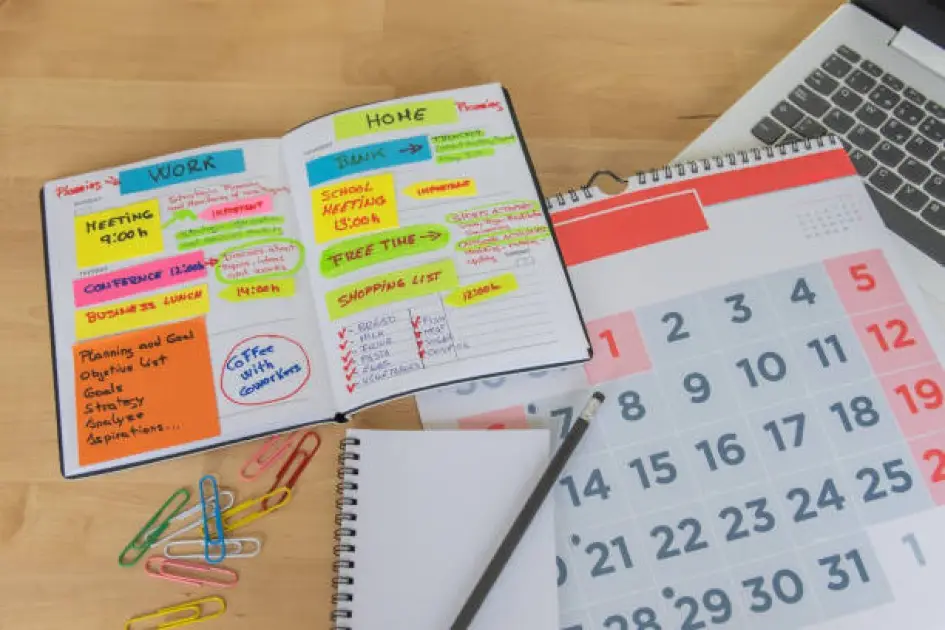
Time-Blocking Your Journaling Routine
Strategic time-blocking can foster a habit of reflective writing, enhancing mindfulness, reducing stress, and promoting personal growth, making it a crucial daily routine in today’s fast-paced world.
The Science Behind Time-Blocking for Reflection
Time-blocking is a cognitive strategy utilized by top executives and productivity experts to allocate specific time slots for tasks, reducing decision fatigue and improving focus.
Dr. Cal Newport emphasizes the importance of time-blocking in Deep Work, stating that it ensures meaningful work completion and prevents distractions in modern life.
A 2018 study in the Journal of Applied Psychology revealed that individuals who scheduled self-reflection performed better in both professional and personal tasks.
By incorporating structured writing sessions into your daily routine, you can transition from sporadic habits to a systematic practice that provides significant mental and emotional benefits.
When Is the Best Time to Write?
Experts suggest aligning your writing sessions with your natural cognitive rhythms. Here’s how different time slots influence the process:
Morning Sessions for Clarity
- Writing in the morning boosts self-awareness by allowing the mind to be free from the distractions of daily tasks.
- Dr. Andrew Huberman suggests that morning reflection, which coincides with peak dopamine levels, enhances focus and encourages deeper self-analysis.
- The Productivity Planner can be used to create a structured routine for your practice.
Midday Sessions for Mental Reset
- A midday session is a crucial mental reset, enabling the processing of emotions and refocusing of the mind.
- Harvard Business School research indicates that individuals who reflect on their midday progress experience a 23% increase in problem-solving skills.
- The Smart Planner Pro can significantly enhance productivity.
Evening Sessions for Emotional Release
- Writing at night provides emotional release and enhances sleep quality.
- The National Sleep Foundation’s study indicates that 30 minutes of reflective writing before bed can significantly reduce insomnia symptoms by 40%.
- The Guided Daily Reflection Notebook is highly recommended by experts for effective nighttime practice.
How to Implement Time-Blocking Effectively
A structured system is a method that helps prevent procrastination and enhances consistency. Follow these expert-backed strategies:
Set a Fixed Daily Time Slot
- Select a time that is in line with your energy levels.
- To maintain consistency, it is recommended to utilize Smart Digital Reminders.
Eliminate Distractions for Deep Focus
- To ensure a productive writing environment, it is recommended to disable notifications and create a specific area for writing.
Use the 90-Minute Productivity Rule
- To maximize engagement, it is recommended to divide your practice into 90-minute blocks.
- Dr. Erik Peper suggests that working in 90-minute cycles aligns with ultradian rhythms, facilitating deep mental immersion.
Pair with Meditation or Breathing Exercises
- Begin by performing a 5-minute mindfulness exercise to initiate a period of profound self-reflection.
- Research indicates that incorporating breathwork and reflective writing can enhance emotional resilience, and structured sessions can be achieved using Mindfulness Timer & Guided Meditation Journal.
Productivity-Reflection Connection
The Pomodoro Technique, a productivity tool, can be effectively applied to writing practices by incorporating 25-minute reflection sessions to maintain a sustainable habit.
Top-performing CEOs and thought leaders engage in structured reflection to monitor progress, analyze decisions, and refine personal strategies.
Billionaire investor Ray Dalio emphasizes the importance of self-reflection in identifying patterns and preventing repeated mistakes through writing about past experiences.
Turn Reflection into a Non-Negotiable Habit
Strategically allocating time to reflective writing enhances mental clarity, emotional balance, and decision-making skills. Start with the Best Time-Block Planner for Self-Reflection for profound transformation.

Journaling with Meditation for Deeper Insight
Integrating writing with meditation promotes mindfulness, deepens understanding of emotions, reduces stress, and enhances self-awareness, crucial for a balanced life in a digitally dominated era.
The Science of Combining Writing with Meditation
Meditation enhances present-moment awareness, while writing externalizes thoughts, enhancing emotional intelligence. Combining mindfulness and expressive writing improves cognitive flexibility and emotional regulation.
Dr. Mark Williams, a clinical psychology professor at Oxford University, suggests that structured writing can help individuals detach from automatic negative thoughts, promoting a more balanced and adaptive perspective.
A study in the Journal of Positive Psychology found that combining meditation and expressive writing significantly increased stress resilience compared to either practice alone.
How to Integrate Meditation with Reflective Writing
To maximize the benefits of this method, establish a structured routine:
- Begin with Focused Breathing: The Focus Journal offers a structured approach to mental clarity, stress free, and overcoming anxiety.
- Set an Intention: Define your purpose before writing, whether it is emotional release, self-discovery, or problem-solving. Clear objectives help you focus and refine your writing.
- Use a Guided Prompt: The Blue Sky Everygirl Self-Care Journal is designed to provide structure and prompts for meaningful wellness, mindfulness, and reflection. It also encourages a deeper understanding of recurring thoughts during meditation.
- Write Without Judgment: The text advises a stream-of-consciousness approach, allowing thoughts to naturally flow without self-censorship.
- Review and Extract Key Insights: The summary emphasizes the importance of identifying recurring themes and patterns in one’s life to enhance self-awareness and improve overall well-being.
Guided Meditation Prompts for Deeper Reflection
Professionally curated prompts enhance the connection between mindfulness and writing. Consider these:
- “What emotions surfaced during today’s meditation?”
- “Which thoughts frequently arise, and how do they influence my well-being?”
- “How can I cultivate more gratitude and presence in my daily life?”
Experts suggest incorporating prompts with theta wave meditation music to enhance cognitive processing.
Best Tools for Enhancing Your Experience
High-quality tools are crucial for effective meditation practices. Essential writing tools include the Muji Smooth Gel Ink Set and Rocketbook Pro 2.0 Reusable Professional Smart Notebook, while mindfulness accessories like the Muse 2 Meditation Headband and Tibetan Singing Bowl Set provide real-time brainwave feedback and deepen the meditation state.
Addressing Common Concerns: Overcoming Mental Blocks
Mental resistance is a common issue, but the “Five-Minute Free Write” method can help overcome this by continuously writing without pausing. Consistency in writing leads to progress and long-term benefits, making the Productivity Planner a great tool for consistency.
Final Thoughts
Journaling is a powerful tool for self-awareness and tranquility. By practicing eleven self-care journaling hacks, you can build a foundation of peace, counteract stress, clear mental clutter, and invite calm into your life. Whether you are a seasoned journal or just starting, each practice offers a powerful way to reconnect with yourself and find stillness when life feels overwhelming.
Overcoming Common Journaling Challenges
Despite facing challenges like writer’s block, inconsistency, or emotional discomfort, strategic solutions can help individuals maintain a reflective writing practice and foster growth.
Breaking Through Writer’s Block
Structured techniques can help overcome mental resistance and overcome the frustration of starting from a blank page.
- Use Thought-Provoking Prompts: Structured prompts and expressive writing exercises can enhance self-reflection, allowing individuals to access deeper emotions and clarify their thoughts, and guided journals like The Five-Minute Journal can be beneficial.
- Embrace Freewriting: Set a five-minute timer for stream-of-consciousness writing, allowing thoughts to flow naturally and eliminating perfectionist tendencies.
- Use Speech-to-Text Apps: Utilize tools like Otter.ai or Dragon Anywhere to convert spoken reflections into written text, reducing the need for typing or handwriting.
Maintaining Consistency in Your Practice
Professionals suggest incorporating structured techniques to help maintain regular engagement with a writing routine, as it is a common struggle to cultivate lasting habits.
- Anchor Writing to an Existing Habit: Habit-stacking, a behavior technique by James Clear, suggests linking a new habit to an existing one, like writing immediately after coffee or checking emails, to establish a consistent cue.
- Invest in a High-Quality Journal: A luxurious leather-bound notebook, like Leuchtturm1917, is renowned for its premium paper quality and elegant design, enhancing motivation and reinforcing commitment.
- Set Micro-Goals for Success: Commit to writing one sentence daily instead of lengthy, time-consuming entries to reduce pressure and maintain consistency over time.
- Utilize Digital Reminders: By scheduling alerts through apps like Notion or Evernote, reflective writing can become a permanent part of your daily routine.
Managing Emotional Discomfort While Writing
Reflecting on individual experiences can reveal challenging emotions, so it is essential to use structured methods to navigate these topics with clarity.
- Reframe Negative Thoughts: Dr. Susan David, a Harvard psychologist and author of Emotional Agility, emphasizes the significance of perspective in writing about emotions, promoting constructive exploration and resilience.
- Use a Secure, Lockable Journal: To protect privacy, consider using password-protected digital journals like Day One App or lockable leather-bound notebooks for expressing personal thoughts.
- End Entries with a Positive Reflection: Recognizing small wins or lessons learned can foster emotional resilience, counterbalance emotional processing, and help individuals cope with difficult moments.
Turning Challenges into Opportunities
To maintain a meaningful and rewarding practice of reflective writing, structured prompts, habit-stacking strategies, and high-quality resources can be used instead of eliminating difficulties.
A sustainable writing habit involves embracing imperfection and consistency, with valuable entries written with authenticity and self-compassion, whether on a premium journal or digital platform.
Final Thoughts
Challenges present opportunities for growth, so embrace flexibility, curiosity, and experimentation to uncover deeper insights. Embrace resistance and write anyway, focusing on progress rather than perfection.
Top Journals & Accessories for an Ultimate Experience
Investing in a well-chosen journal and high-quality accessories enhances the writing experience, making self-care routines more enjoyable and effective. This includes premium notebooks, writing instruments, and digital innovations for deeper reflection.
Premium Notebooks: Elevating the Writing Experience
The quality of a notebook significantly impacts on its overall experience, affecting paper texture and durability. Experts suggest choosing journals that balance aesthetics with functionality.
Dr. Emily Carter, a cognitive behavioral therapist specializing in therapeutic writing, suggests that a well-designed notebook not only improves the writing process but also fosters commitment and inspiration.
Here are some top-rated notebooks that stand out in both form and function:
- Leuchtturm1917 Hardcover Notebook: This German-made notebook is a popular choice among professionals and creatives due to its numbered pages, archival-quality paper, and elegant design.
- Moleskine Classic Notebook: This option is renowned for its sophisticated aesthetic and smooth paper texture, making it ideal for structured self-care writing.
- Midori MD Notebook: This notebook is a blend of minimalism and refinement, offering a refined writing surface that is perfect for those who appreciate simplicity and craftsmanship.
The premium options provide a seamless and enjoyable experience, promoting consistency in daily self-reflection.
Writing Instruments: The Power of the Right Pen
Writing can be transformed into a meditative and rewarding ritual, with experts suggesting smooth-flowing pens to reduce hand fatigue and improve legibility.
Michael Langford, a design specialist in luxury writing tools, emphasizes that the tactile sensation of a high-quality pen can significantly enhance self-care writing habits.
Top recommendations include:
- Pilot Precise V5 RT: This pen is renowned for its precise tip and ultra-smooth ink flow, which enhances clarity and control.
- Lamy Safari Fountain Pen: This fountain pen is a premium option for those who appreciate the elegance of fountain pens, boasting an ergonomic grip and a refillable ink system.
- Uni-Ball Vision Elite: This pen is perfect for journaling and travel, ensuring a smooth writing experience and resisting ink leakage during flights.
Choosing a high-performance pen not only enhances comfort and motivation but also reinforces the benefits of consistent writing.
Accessories & Enhancements: Beyond the Basics
A carefully curated collection of accessories enhances the writing process by providing practical benefits such as organization, creativity, and inspiration.
Elegant Bookmarks & Page Markers
High-quality bookmarks and page markers make it easy to track important entries.
- Magnetic Page Clips: These stylish, reusable markers help quickly locate specific sections.
- Leather Bookmark Set: Handmade and durable, these add a sophisticated touch to any notebook.
High-Performance Storage & Organizers
Efficient storage solutions are crucial for maintaining the accessibility and protection of all writing materials.
- Leather Journal Covers: Offering both durability and elegance, these covers protect notebooks while adding a refined aesthetic.
- Desk Organizer for Writing Tools: A must-have for those who prefer a dedicated space for pens, stickers, and essential supplies.
Illumination & Ambience: Setting the Mood for Reflection
The use of appropriate lighting can create a conducive atmosphere that promotes relaxation and enhances the depth of thought.
- Honeywell Desk Lamp: Adjustable brightness and color temperature help create the perfect ambiance for writing.
- Scented Candles with Essential Oils: Aromatherapy candles infused with Lavender, Basil, and Jasmine enhance focus and relaxation.
The enhancements have enhanced the experience, making self-care writing a more significant and rewarding aspect of daily life.
Digital Innovations: Bridging Tradition & Technology
Digital options offer a blend of tradition and modern convenience, offering structure and flexibility for those who prefer a blend of both.
Dr. Amanda Reynolds, a neuroscientist, suggests that digital tools can enhance consistency and psychological benefits of traditional writing by providing enhanced organization, searchability, and self-expression.
Top digital tools include:
- Day One Journal App: The app is highly regarded for its encryption features, multimedia integration, and cloud synchronization capabilities.
- Evernote for Reflection & Goal-Tracking: This product is suitable for those who prefer a structured format, offering voice-to-text and handwriting recognition options.
- Remarkable 2 Digital Notebook: This tool is a game-changer for writers who value the tactile quality of handwritten notes but prefer the convenience of digital storage.
The combination of these tools with traditional methods ensures a comprehensive and user-friendly writing experience.
Final Thoughts
Selecting suitable notebooks, pens, and accessories can transform self-care writing into a profound practice, fostering creativity, self-reflection, and emotional well-being through personal resonance.
The use of these recommended tools can enhance and maintain the sustainability of writing as a daily routine for self-care enthusiasts.
Recap: Transform Your Mindset with Journaling
Structured writing practice aids in self-reflection, emotional patterns, self-awareness, resilience, cognitive clarity, and problem-solving, while maintaining consistency enhances cognitive clarity and problem-processing abilities.
Dr. James Pennebaker, a renowned researcher in expressive writing, asserts that writing about emotional experiences significantly influences both physical and mental well-being.
Studies show structured self-expression reduces stress, anxiety, and negative emotions, with daily reflection reducing negative emotions by 25%, supporting cognitive restructuring and personal transformation.
Choose high-quality writing materials like The Intelligent Daily Writer’s Notebook, The Mindfulness Companion, or Rocketbook Pro 2.0 for enhanced experience, tactile engagement, and deep introspection.
Consistent self-expression has transformative potential, not just as passive activity but as a dynamic process of reshaping internal narratives.
Neuroscientist Dr. Lisa Feldman Barrett explains that reflective writing helps us construct mental frameworks that shape our perception and interaction with the world.
Reflective writing enhances mental clarity, structured thinking, emotional attune, problem-solving skills, and confidence, providing long-term cognitive benefits and enhancing daily routines in today’s distraction-driven world.
In summary, adopting this practice is an investment in mental resilience, creativity, and overall well-being, transforming it into a powerful tool for self-growth and emotional mastery through appropriate tools and techniques.
Frequently Asked Questions
What is the best method to start a consistent writing habit?
To establish a sustainable habit, set a specific time each day for self-reflection. Habit stacking, pairing new habits with existing ones, improves long-term consistency. Start with five minutes daily and gradually expand. Using a structured planner like the Daily Self-Care Planner enhances accountability and helps track progress effectively.
Should I handwrite or use digital platforms?
Handwriting enhances cognitive processing, emotional connection, and memory retention, while digital platforms offer convenience and searchability. Efficient digital writing tool like AINOTE Air 2 Bundle allow structured entries, while high-quality notebooks like the Leuchtturm1917 Journal offer a classic approach with premium durability.
How do I avoid self-censorship when writing personal thoughts?
Individuals often filter their thoughts due to fear of judgment, even in private reflections. To counter this, try implementing a freewriting technique, writing continuously for a set period without concern for structure or grammar. Your journal should be your safest space, free from expectation or correction. Encrypted digital options provide secure storage.
Can structured templates improve self-reflection?
Structured prompts and guided layouts improve self-awareness and emotional regulation, according to a study in the Journal of Positive Psychology. Tools like the Five-Minute Journal and printable self-care worksheets offer structured questions for personal growth.
How often should I review past entries?
Regular self-reflection enhances personal insights and emotional growth. Monthly or quarterly reviews help identify recurring themes, refine goals, and celebrate progress. Planners like the Intelligent Change The Five Minute Journal feature integrated reflection checkpoints for optimal practice.
What should I do when I encounter writer’s block?
Writer’s block is often caused by internal resistance, perfectionism, or emotional avoidance. To overcome this, switch from text to voice recordings, sketches, or bullet points, and use dynamic prompts. The Promptly Journals Guided Notebook provides pre-designed exercises to overcome creative stagnation, such as “What emotion is most present today?” and “If I could write a letter to my future self?”
Are there specific writing techniques that improve mental clarity?
Cognitive behavioral therapy (CBT) techniques, like cognitive restructuring, help individuals reframe negative thought patterns, reduce emotional distress, and enhance resilience. Journals like the Therapy Journal for Anxiety & Stress offer structured guidance for emotional clarity.
What are the best practices for maintaining privacy?
Privacy concerns arise when journaling sensitive topics. Solutions include lockable notebooks, password-protected digital platforms, or symbolic coding. Lockable Journal for Adults ensures confidentiality for handwritten notes, while Daylio offers biometric authentication for digital security.
How do I incorporate mindfulness into my writing routine?
Mindfulness techniques can be combined with writing to improve introspection and emotional awareness. Breathing-focused journaling and setting a mindful intention before writing can create a calm mental state. The Mindful Living Journal offers guided mindfulness integration exercises that merge meditation with self-inquiry.
What role do affirmations play in journaling?
Affirmations are proven tools for reshaping thought patterns, with daily practice resulting in a 40% reduction in stress-related symptoms. Writing affirmations reinforces self-identity and builds confidence, with the mirror method being a practical exercise. Structured affirmation journals like the Self-Love Journal with Affirmations guide users through this transformative practice.
How do I know if my journaling practice is effective?
Effectiveness is measured not by-word count but by personal impact. Signs of successful practice include:
- Increased self-awareness and emotional clarity
- A greater sense of control over thoughts and feelings
- Identifying patterns in personal growth over time
- Reduced stress and improved mental well-being
The mood-tracking feature in planners like Panda Productivity Planner offers measurable insights into personal development.

